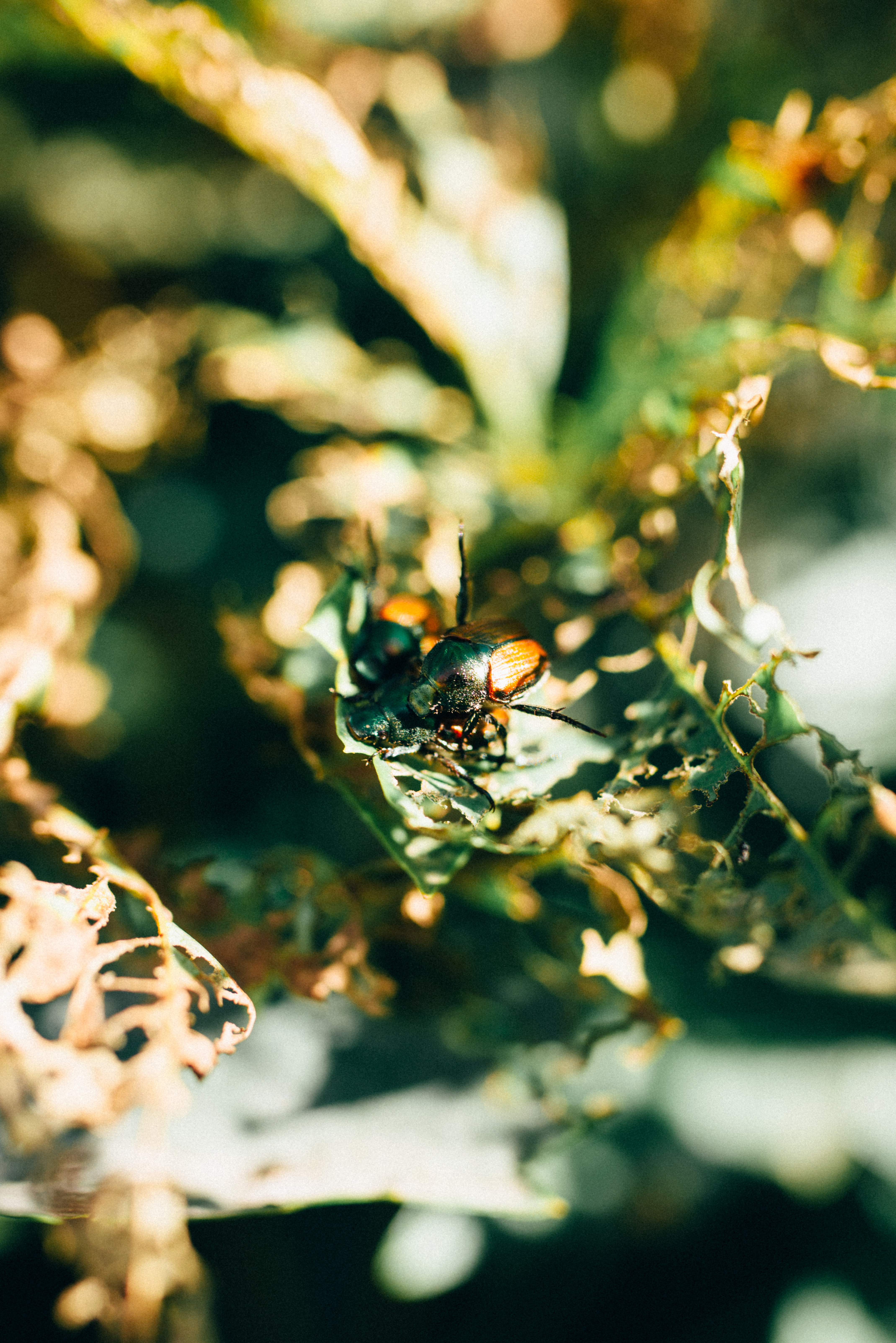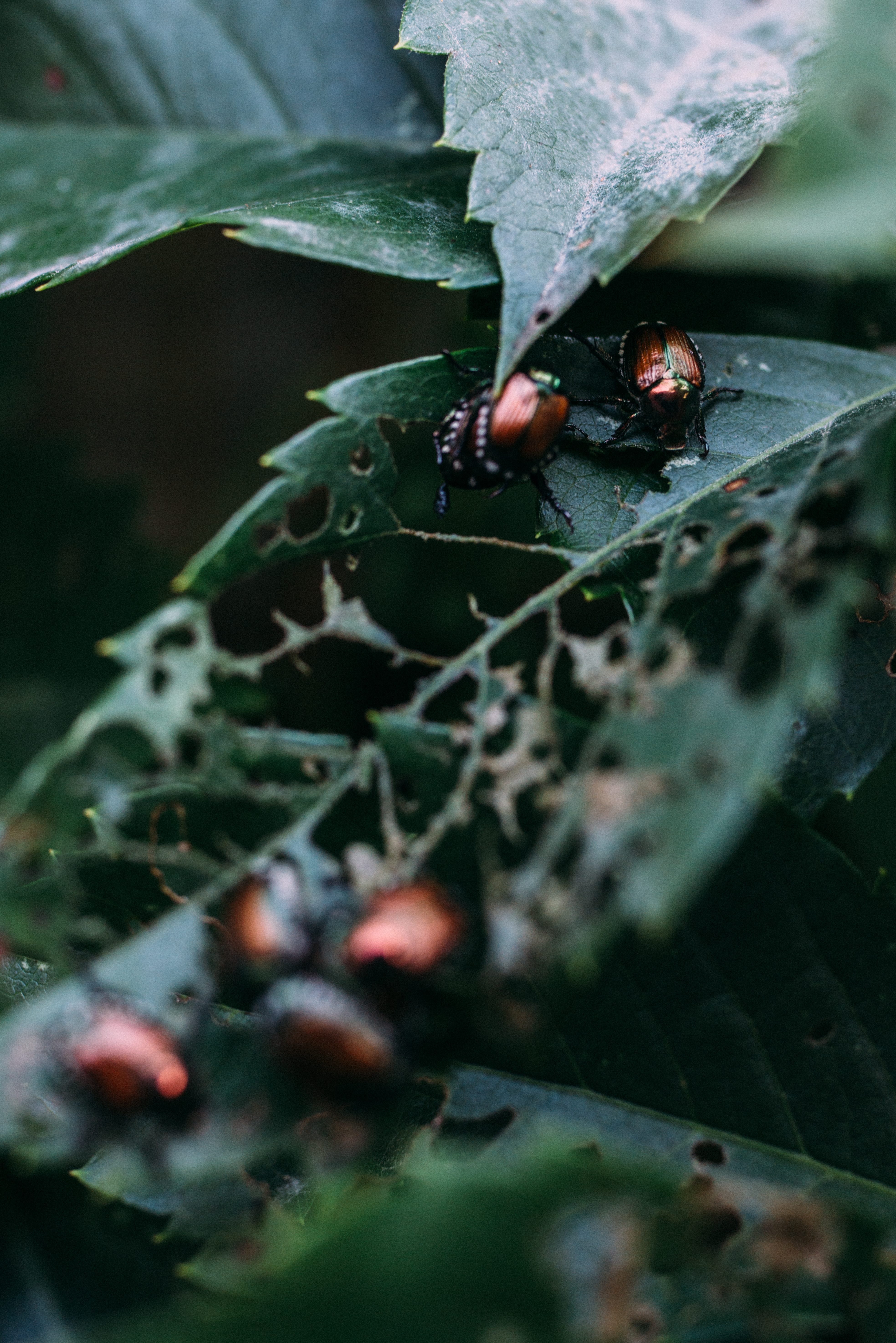dealing with japanese beetles and slugs
Posted by Megan Nichols on Aug 3rd 2020

Japanese Beetles
These bugs are just plain gross. They are destructive and excel at making gardeners miserable. Their favorite foods include roses, raspberries, grape vines, and linden trees. They’ve been seen on dogwood and Echinacea, too, though.

- Be out there, be watching. Know how to identify the beetle and the damage they cause (they eat leaves, making them nothing more than lacy remnants, and they eat blossoms, too).
- Knock down the population. Don’t delay in taking care of them, it just gives them time to increase their numbers.
- Hand pick and toss beetles into a bucket of soapy water, or just tap them in. Do this a couple times a day when they first emerge because new beetles are continuing to hatch and appear at this time.
- Spray Japanese Beetles with an insecticide. Bonide’s Japanese Beetle Killer, Eight, and Captain Jack’s Dead Bug are all good choices. Spray very early in the morning or late in the evening when pollinators aren’t foraging, avoid spraying blooms for pollinator safety (if possible, enclose blooms in baggies for extra protection), and try to hit the beetles directly.
- Beetle baggers are another option. It’s true that the bagger attracts beetles, so your neighbor’s beetles might end up in your yard. However, the point is to place it away from their favorite plants to lessen the damage plus kill the beetles and stop them from laying more eggs.
Slugs
Slugs are a common garden pest that feed on a variety of plants, but they are probably best known for being detrimental to Hosta gardens.
- They mostly feed at night, so you won’t usually see the slugs themselves, just the damage. They eat holes in the leaves of plants, and on Hosta, in particular, it can look like hail damage.
- Sink a shallow can, such as a tuna can, in the ground and fill with beer. Slugs are attracted to the beer, crawl in, can’t get out and drown.
- Sprinkle a granule slug killer such as Sluggo or Sluggo Plus. The slugs come out at night, eat the granules, start feeling bad, go home, and never emerge.
General Tips
Make note of the timing of garden pests and disease. Where is the problem? When did it first appear? What worked and what didn’t in attempting to fix the issue? Next year, review your notes at the beginning of the season and be ready to tackle any issues.
Bee careful, bee safe. Keep our pollinator pals in mind when choosing what to treat the problem with and how to treat it.
Don’t become too disheartened over bug and disease problems - it’s unfortunate, but it’s just part of the process of gardening.
Photos by: John Grunow

